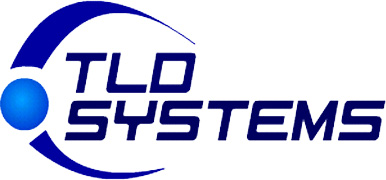“I performed a Lapidus bunionectomy that went on to a subsequent nonunion of the arthrodesis site. We are planning a return to the operating room to revise it. Any suggestions on the best ICD-10 code and best CPT code to use in this situation?”
So, a patient had a Lapidus bunionectomy performed. This is billed using CPT 28297 which is defined as the following: Correction, hallux valgus (bunionectomy), with sesamoidectomy, when performed, with 1st metatarsal medial cuneiform joint arthrodesis, any method. Unfortunately, as the postoperative course moved forward, a non-union occurred at the site of the arthrodesis, at the base of the first metatarsal and the medial cuneiform. The site of the arthrodesis needs to be revised. How should this be coded?
I am assuming that the revision of the site of the arthrodesis is going to be performed after the 90-day global period that was created by the performance of the hallux valgus correction has run its course. Therefore, the revision procedure is not being performed to correct a complication of the original procedure. Thus, the application of the 78 modifier to the CPT code for the revision procedure is not needed. The appropriate CPT code to bill for the revision of the arthrodesis that was performed at the articulation of the base of the 1st metatarsal and the medial cuneiform is CPT 28740 which is defined as the following: Arthrodesis; midtarsal or tarsometatarsal, single joint.
The next question should be regarding the original hardware that is in place at the site of the arthrodesis that was originally performed as part of the Lapidus bunionectomy. Since it needs to be removed, can it be billed for? The answer is no. The appropriate CPT code to bill for the removal of the original hardware is CPT 20680 which is defined as the following: Removal of implant; deep (e.g., buried wire, pin, screw, metal band, nail, rod or plate). The issue is that since new hardware is going to be placed within the revised arthrodesis at the articulation of the 1st metatarsal and the medial cuneiform, the removal of the original hardware is considered to be incidental to the revision procedure and is not separately reimbursable.
However, if it was appropriate to bill for the removal of the hardware, would CPT code 20680 be the correct CPT code to bill?
Implant vs. Foreign Body
- It is important to access the 2025 CPT Manual. Under Surgery Guidelines, you need to access the “Foreign Body/Implant Definition.”
- “An object intentionally placed by a physician or other qualified health care professional for any purpose (eg. diagnostic or therapeutic) is considered an implant. An object that is unintentionally placed (eg. trauma or ingestion) is considered a foreign body. If an implant (or part thereof) has moved from its original position or is structurally broken and no longer serves its intended purpose or presents a hazard to the patient, it qualifies as a foreign body for coding purposes, unless CPT coding instructions direct otherwise or a specific CPT code exists to describe the removal of that broken/moved implant.”
If Implant Needs to be Removed (ie. Internal Fixation)
- 20680 Removal of implant; deep (e.g., buried wire, pin, screw, metal band, nail, rod or plate)
If Foreign Body is Removed
- 28190 Removal of foreign body, foot; subcutaneous
- 28192 Removal of foreign body, foot; deep
- 28193 Removal of foreign body, foot; complicated
Based upon the CPT definition of Implant vs. Foreign Body, the hardware that needs to be removed would be classified as a foreign body. The correct CPT code to bill would be CPT code 28192. Despite the fact that the hardware that needs to be removed is identified as a foreign body, since new hardware is going to be placed within the original arthrodesis site, the removal of the hardware, now considered to be a foreign body will still be considered to be incidental to the revision procedure and will not be separately reimbursable.
As far as the most appropriate ICD-10-CM code is concerned, M96.0 which is defined as Pseudoarthrosis after fusion or arthrodesis would be most appropriate.
This is my opinion.
Michael G. Warshaw, DPM, CPC
Terrific NEWS!!!
THE 2025 PODIATRY CODING MANUAL IS NOW AVAILABLE in either Book or Flash-drive formats. It has been completely updated for the calendar year 2025 including the NEW policy for the application of skin substitutes that goes into effect February 12, 2025. Many offices across the country consider this to be their “Bible” when it comes to coding, billing, and documentation. The price is still only $125 including shipping! To purchase, access the website drmikethecoder.com.
No credit card? No problem! Just send a check for $125 to the following address:
Dr. Michael G. Warshaw
2027 Bayside Avenue
Mount Dora, Florida 3275



Read Comments